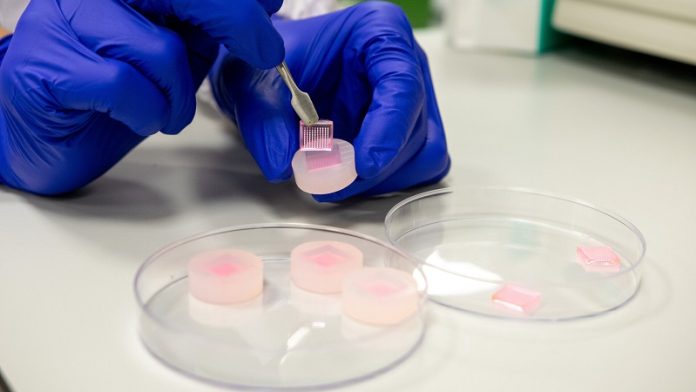
Scientists in Singapore have developed tiny microneedle patches that could help people with diabetes heal their wounds much faster.
These special patches work like a sponge, either delivering helpful healing substances or removing harmful ones from the wound.
This breakthrough could help prevent serious complications like amputations, which are common when diabetic wounds don’t heal properly.
More than 6% of people around the world suffer from chronic wounds caused by diabetes.
In Singapore alone, there are about four lower limb amputations every day due to non-healing wounds. Treating these wounds is not only painful but also expensive, costing around S$23,000 per patient.
To solve this growing problem, a team led by Assistant Professor Andy Tay from the National University of Singapore (NUS) created two types of microneedle patches to speed up healing.
These patches are tiny, painless, and placed directly on the wound.
They either boost helpful proteins called growth factors, which help the skin heal, or remove harmful substances that cause inflammation.
“Growth factors are very important for healing, but in diabetic wounds, they are quickly broken down, and the inflammation makes things worse,” said Prof Tay. “Our microneedles are designed to fix both issues.”
In their first method, the team used sucralfate microneedles (SUC-MN) to deliver interleukin-4 (IL-4) and sucralfate directly into the wound. IL-4 helps the immune system heal damaged tissues, and sucralfate protects the growth factors from breaking down.
These microneedles dissolve in the wound, avoiding damage caused by removing sticky bandages. The result? Wounds healed twice as fast compared to traditional treatments.
The second method is a brand-new idea: using microneedles to remove harmful substances. These “sponge-like” patches, called heparin-coated porous microneedles (HPMN), soak up inflammation-causing molecules called chemokines, which attract immune cells that make the wound worse.
In lab tests, wounds treated with HPMN patches had 50% less inflammation and were 90% smaller after just two weeks.
This exciting research was published in the journals Biomaterials and Advanced Functional Materials. The team is now working on making these patches even better by adding antibacterial features and using 3D printing to control the size of the pores in the microneedles. They’re also designing flexible versions to fit different body shapes.
“We believe this technology can greatly improve the lives of people with diabetic wounds and skin conditions like eczema or psoriasis,” said Prof Tay. “It’s a big step forward in wound care.”
If you care about diabetes, please read studies about 5 vitamins that may prevent complication in diabetes, and how to manage high blood pressure and diabetes with healthy foods.
For more health information, please see recent studies about vitamin D and type2 diabetes, and to people with type 2 diabetes, some fruits are better than others.



